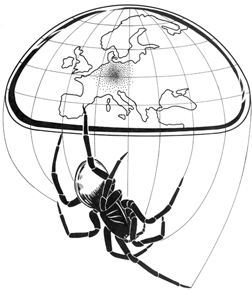Arachnologische Mitteilungen
https://arages.de/zeitschrift/arachnologische-mitteilungenHemm V, Meyer F & Höfer H
Die epigäische Spinnenfauna (Arachnida, Araneae) in Sandrasen, Borstgrasrasen und Ruderalfluren im Naturschutzgebiet „Alter Flugplatz Karlsruhe“
The epigeic spider assemblages (Arachnida, Araneae) of dry acid grassland, mat-grass and ruderal vegetation in a nature protection area in the upper Rhine valley
Heft 44
Epigeic spiders were sampled using pitfall traps during one year in an anthropogenic open site within the city of Karlsruhe (Alter Flugplatz Karlsruhe). The area, historically used as a military parade ground and airport, is protected as a Special Area of Conservation (SAC) within the Natura 2000 network of the EU and since 2010 as a German nature reserve. We were interested in the diversity, assemblage structure and distribution of spider species within the area and investigated three different plant formations: sparse grass-dominated vegetation with frequent open sand patches (sandy turf), closed grassland dominated by the mat-grass (Nardus stricta) and ruderal vegetation with blackberry bushes. 123 species were identified from these captures, including many specialists of xerothermic habitats and rare and endangered species like Alopecosa striatipes, Agroeca lusatica, Haplodrassus dalmatensis, Styloctetor romanus, Typhochrestus simoni and Xysticus striatipes as well as extremely rare species of unclassified red list status like Mysmenella jobi, Theonoe minutissima and Zora parallela. The three investigated habitat types were quite similar concerning α-diversity, while measures of β-diversity indicated a strong species turnover. By performing an ecological habitat analysis (using autecological data on spiders) essential differences between the three habitat types could not be discovered, especially not between mat-grass and sandy turf. However, analysing the guild structures showed that different ways of using habitat resources dominated in the different habitat types. For Nardus-grassland several species could be identified as indicator species. While many xero- and photophiles live in the open grassland, the stenotopic psammophiles of inland dunes in the region were not found. The ruderal area houses a mix of grassland- and forest species.
diversity; faunistics; Germany; habitat classification; inland dunes; lowland dry acid grassland; mat-grass; sand habitat; xerothermic habitat


